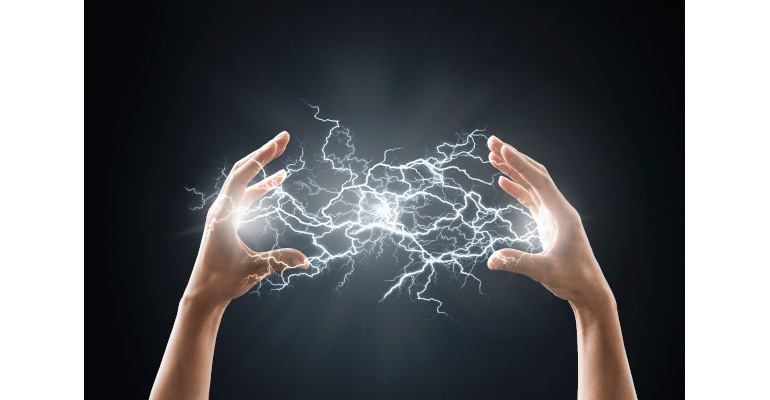Researchers potentially have found a way to tap waste energy from visible light communications to power electronics through energy harvesting.
February 10, 2023

Researchers have developed a way to harvest energy from a next-generation data-transfer technology, using the human body as a way to amplify the process. The breakthrough presents a path forward for using waste energy from visible light communication (VLC) to power wearable and other electronic devices, they said. Scientists from the University of Massachusetts Amherst have invented a low-cost way to harvest waste energy from VLC that uses the human body as an antenna, they said. VLC is a wireless version—of sorts—of fiber optics that uses flashes of light to transmit information and is a promising aspect of the next-gen wireless technology, 6G, researchers said.
“Instead of using radio signals to send information wirelessly, it uses the light from LEDs that can turn on and off, up to one million times per second," explained Jie Xiong, professor of information and computer sciences at UMass Amherst, who led the project.
One of the most attractive aspects of using VLC as an energy source is that the infrastructure to support it already is ubiquitous, as LEDs are widely used in our homes, vehicles, streetlights, and offices, he said. This means these devices also could be used to transmit data. “Anything with a camera, like our smartphones, tablets or laptops, could be the receiver,” Xiong said.
This also opens up great potential for a new energy source, as VLC systems also leak a significant amount of energy because the LEDs also emit “side-channel RF signals,” or radio waves, Xiong and a collaborating researcher and UMass Amherst graduate student, Minhao Cui, reported in a previous research paper. If this leaked RF energy could be harvested, then it could be put to use, researchers said.
The Human Body as Antenna for Energy Harvesting
To explore the possibility of using VLC as a source of energy, researchers first used coiled copper wire to build an antenna that could collect leaked RF signals. The next step was to figure out how to maximize the collection of energy through its design, they said.
Researchers experimented with numerous solutions, including varying the wire's thickness and the number of times it was coiled. In their experimentation, they discovered something curious—that the antenna's efficiency was directly related to whatever it touched, they said.
Various surfaces on which researchers tested this reaction included plastic, cardboard, wool, and steel, as well as walls of varying thickness and even powered-off electronics, such as phones and laptops.
Eventually, Cui wondered what would happen if the coil came in contact with the human body, and this is how the team realized that it is actually the best medium for amplifying the coil’s ability to collect leaked RF energy, researchers said. In fact, by putting the coil in contact with the body, it could harvest up to 10 times more energy than with the coil alone.
Because people are accustomed to wearing jewelry, researchers decided this would be the most user-friendly form factor for their technology. They designed a device called “Bracelet+,” which is a simple copper-wire coil that can be worn as a typical piece of the jewelry for which it's named on the upper forearm.
Potential for Use for Energy Harvesting
Other designs that can be used for the coil include a ring, an ankle bracelet, or a necklace, though the bracelet seemed the best fit for not only harvesting energy but also for a user's wearability, researchers noted.
The team presented a paper on their research at the Association for Computing Machinery’s Conference on Embedded Networked Sensor Systems, winning the Best Paper Award.
The design of Bracelet+ costs a mere 50 cents, but it can harvest micro-watts of energy—"enough to support many sensors such as on-body health monitoring sensors that require little power to work owing to their low sampling frequency and long sleep-mode duration," Xiong said.
The team plans to continue their work and plans to commercialize Bracelet+ and potential spin-off technology, they said. The ultimate goal of the research is to harvest waste RF energy "from all sorts of sources in order to power future technology," Xiong said.
About the Author(s)
You May Also Like



